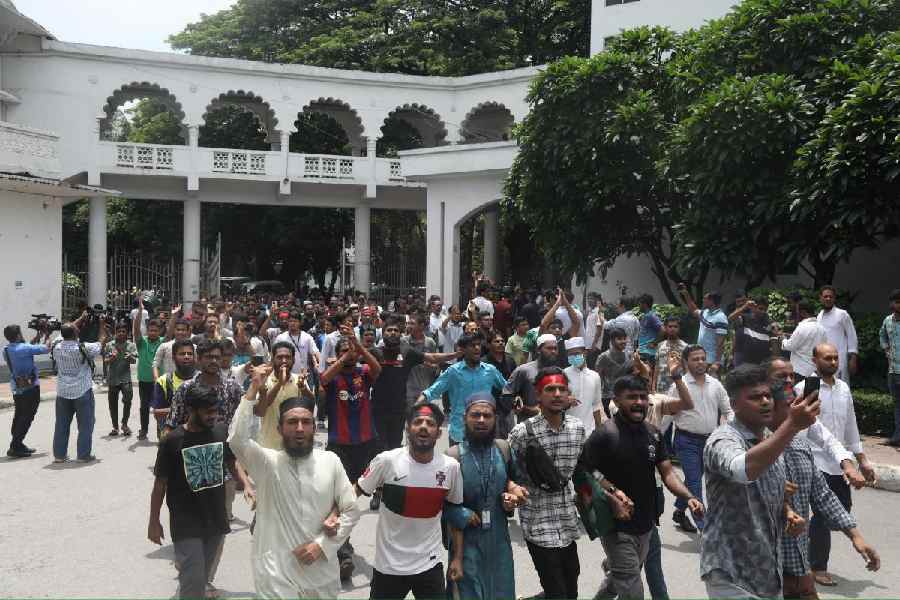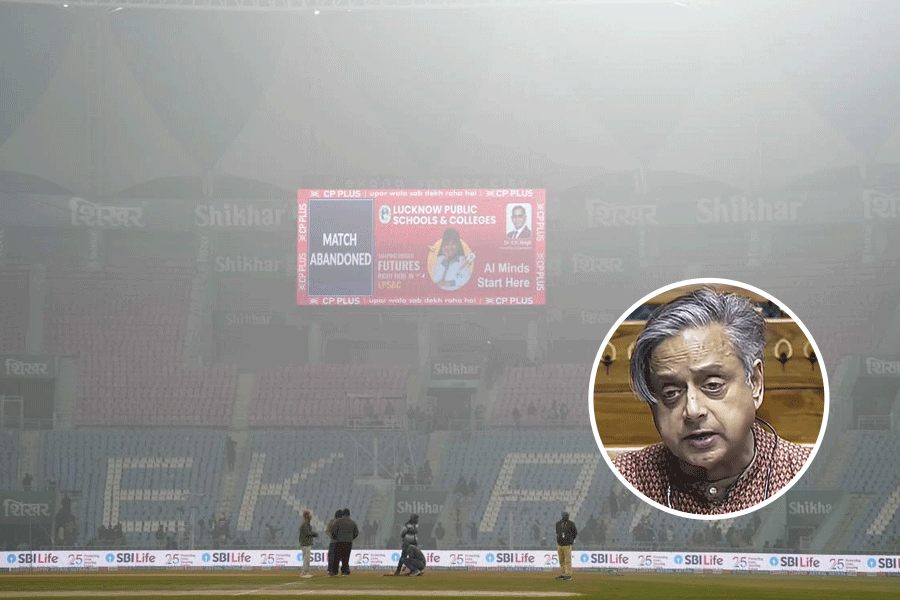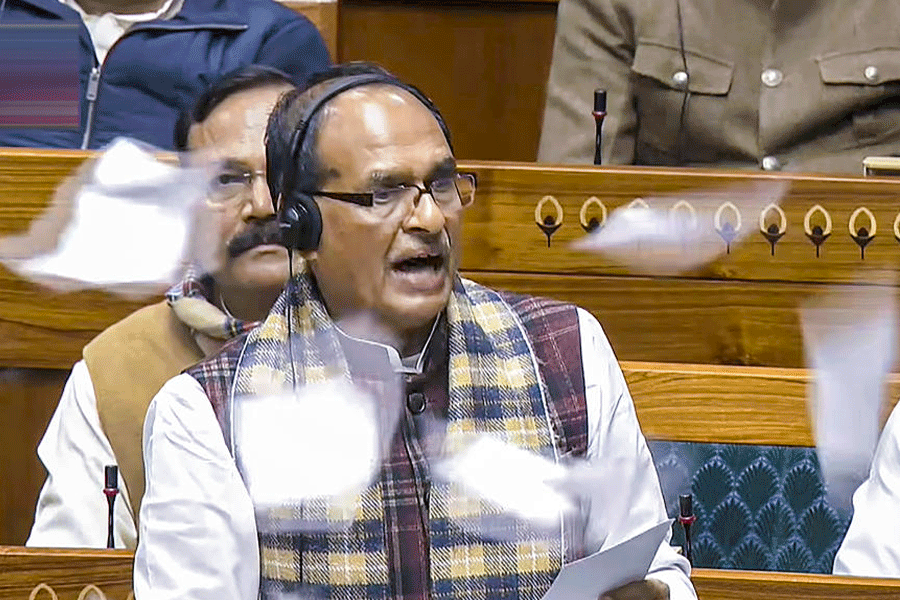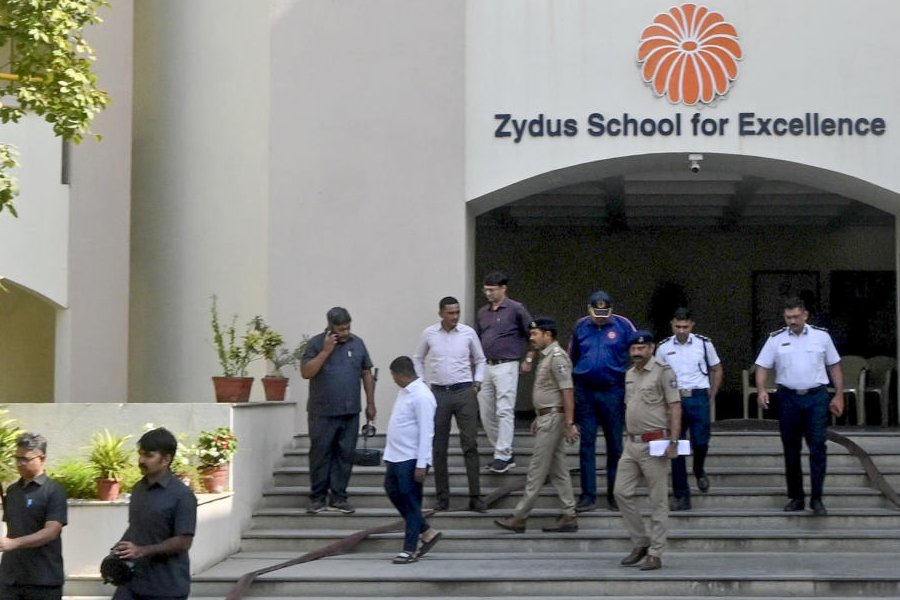From reinforcing a bamboo fence separating them from Bangladeshis to staying up all night for vigil, residents of a Meghalaya village located metres from the international border are on the edge fearing influx of people from the other side after unrest that overthrew the Sheikh Hasina government.
The 90-odd residents of Lyngkhong village in East Khasi Hills district had erected a rag-tag bamboo fence along the border during the COVID pandemic to prevent petty crimes from across the border.
Lyngkhong is one of several sectors in Meghalaya where border fence could not be constructed due to land demarcation issues and the presence of habitation within 150 yards of the international border pillar or zero line.
A quick tour of the village revealed that most of the houses were located very close to the international border, while the only football ground is situated on the zero line, with children playing under the watchful eyes of the BSF at all times.
Although Lyngkhong has not experienced any serious incident since the fall of the Hasina government on August 5, villagers remain in a state of constant fear.
"On August 5, we were anxious and could not sleep at night fearing our neighbours in Bangladesh might turn violent. Thankfully, the Border Security Force (BSF) increased its vigil, posting more personnel at its Lyngkhong outpost, in addition to the village defence party and the men who stayed up all night to ensure our safety," Deria Khongsdir, a 42-year-old mother of nine, told PTI while recounting her anxiety.
Deria and her younger sister live just a few metres from their Bangladeshi neighbours, with an IB pillar and the bamboo fence, erected by the villagers three years ago, serving as their only protection.
"This bamboo fence is our only protection. It has helped prevent petty crimes at the village level, but we are uncertain if it will be effective in a more serious situation," she said.
Villagers have now added fresh bamboo to the fence to reinforce it.
Lyngkhong falls within 150 yards of the zero line and as per norms, a barbed wire fence can be constructed only after 150 yards. So, when foundation was laid for a fence in 2021, it left the village outside of the protection of the fence.
Fierce protests by villagers forced work to halt. They also erected the bamboo fence at the zero line and urged authorities to erect the barbed wire fence along that line.
Negotiations are currently underway between the higher authorities of the two countries to have the barbed wire fence built at the zero line, protecting Lyngkhong, officials said.
Around 80 per cent of the 443 km-long India-Bangladesh border in Meghalaya has been fenced, except in areas where Border Guards Bangladesh oppose it or where the terrain is too difficult for construction.
"By convention, the fence should be built at least 150 yards from the zero line, but that's not always the case. BGB sometimes allows fence to be built at the zero line, depending on the presence of habitation, as in Lyngkhong," a senior official of the BSF's Meghalaya Frontier said.
The Government of Bangladesh has agreed to this arrangement in at least seven locations along the border in Meghalaya, and discussions are underway to extend this to Lyngkhong.
However, approval is still pending for at least 13 such areas, and obtaining it is a long and arduous process.
"We sent a similar proposal in 2011, but concurrences were only received in 2020 for certain areas," the official said, without providing further details.
Dabling Khongsdir, the matriarch of Lyngkhong and a landowner, expressed deep resentment over the Indian government's handling of the fence issue.
"It is not fair that our village would fall outside of the Indian territory after the fence is built. We do not feel safe. We want to feel secure. We have lived here since time immemorial. We hope the new government in Bangladesh and the Government of India would resolve this soon," she said.
Although there is a BSF outpost in the village, Dabling said "anti-national elements" often take advantage of the porous border, especially at night.
Lyngkhong is connected only by border roads. The village lacks electricity, relying on solar power for lighting and wood for cooking.
Ramu Khongsdir, Dabling's son and the village headman, expressed concern over Lyngkhong's vulnerable position.
"During unrest in Bangladesh, we cannot sleep peacefully," he said, urging Chief Minister Conrad K. Sangma and local MP Ricky Syngkon to consider the villagers' request.
"We want the barbed wire fence to come up as soon as possible," he said, noting that even the border roads are under BSF control, limiting their use.
Except for the headline, this story has not been edited by The Telegraph Online staff and has been published from a syndicated feed.










